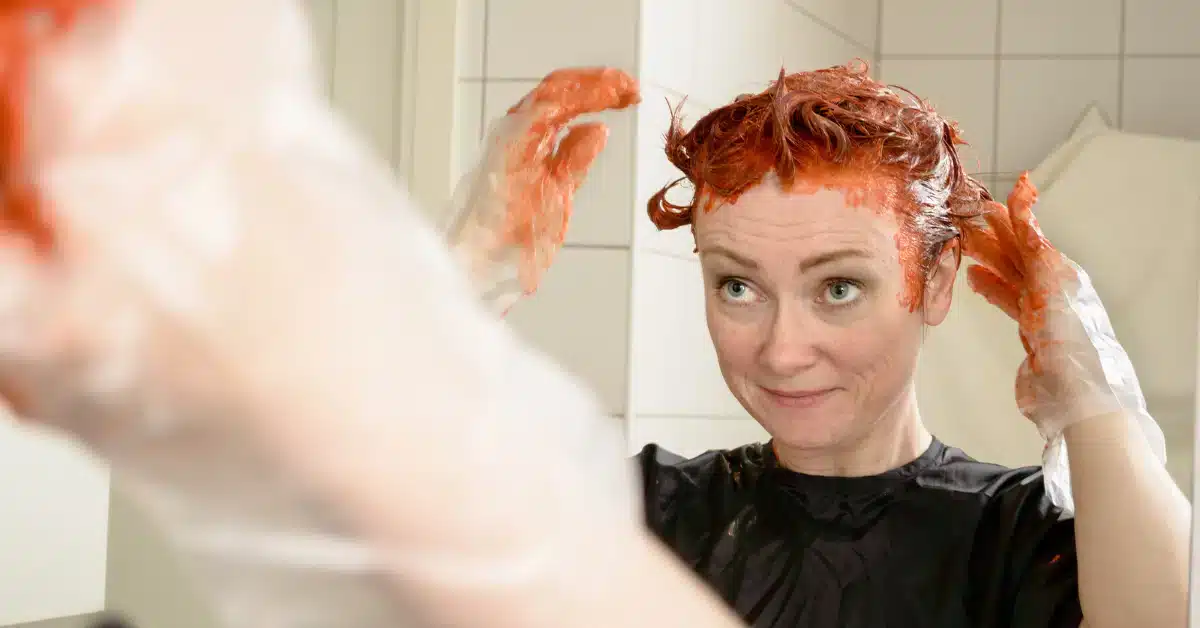Can Dying Hair Cause Hair Loss?
Hair coloring is very common these days. Many young individuals try unique and vibrant colors for hair dying.
According to the U.S. Census data and Simmons National Consumer Survey (NHCS), 63.08 million Americans used hair coloring products in 2020.
As much as a hair color looks good on an individual, it also causes several hair problems.
There are many hair dyes, and their effects on hair are also different.
However, it is said that dying your hair is not directly linked to hair loss.
But some impacts of hair dyes may lead to it.
The prime reason for the impacts is the harsh chemicals used in hair-dying products.
Read on to learn about the connection between hair dying and hair loss.
Types of hair dyes
There is not just one type of hair dye. It’s of several kinds.
The effect of hair dyes on hair also depends upon its type. The main types of hair dyes are:

Permanent hair dyes
Permanent doesn’t mean they will last for a lifetime. But it will last more than other types of hair dyes.
The same vibrancy of the hair as on the day of coloring can remain for up to 6-8 weeks.
The chemicals used to make the hair dye last longer are much harsher.
The deep penetration of color makes the hair more prone to damage.
Semi-permanent hair dyes
As the name suggests, semi-permanent hair dyes last shorter than permanent dyes.
It may last anywhere from 6-8 washes.
They don’t profoundly penetrate the hair shaft.
They only deposit the color on the cuticles of the hair shaft.
Temporary hair dyes
Temporary hair dyes are best for people who want to experiment with different hair colors.
They usually fade entirely just after two washes.
They don’t cause much damage to the hair. The reason is that your hair stylist may only apply it to the hair’s surface.
Bleaching
In the bleaching process, your natural hair color is stripped off.
Melanin, your natural hair color, is dissolved with alkaline and oxidative agents.
Bleaching your hair multiple times can cause damage.
Effects of dying hair
Dying your hair doesn’t directly cause hair loss. It affects the hair severely, and the affected hair can lead to hair loss.
It happens due to the dye’s potential impact on the proteins and lipids present in the hair that support healthy hair.
Due to dying, modifications to the hair shaft’s inner and exterior structure can harm hair.
There may be below-listed effects due to dying hair:
- Loss of hair strength
- Your hair may not be able to handle heat styling
- Reduced hair thickness
- Increase in the roughness of hair follicles
Harmful ingredients in hair dye
Certain chemicals used in hair dyes are severely harmful to the good health of hair.
The ingredients reported in hair dyes are:
Titanium dioxide

Titanium dioxide is a naturally occurring mineral. It appears white and opaque.
It has been used as a bleaching agent in several products.
In the Journal of the European Academy of Dermatology and Venereology, dermatologists found titanium dioxide along a patient’s hair shafts with Frontal Fibrosing Alopecia.
Frontal fibrosing Alopecia is when your hairline is receding backward, and you are losing hair along the front of your hairline.
Triethanolamine
Triethanolamine is a non-active compound that is used in a range of products, including hair care.
It has a slight ammonia-like smell that is found in hair dyes.
It can irritate the scalp and damage the keratin, a vital component of hair.
The damage can ultimately result in dry and brittle hair.
Mica
Mica is a naturally occurring mineral. It is a group of silicate minerals widely distributed in different types of rocks.
A Journal of the American Academy of Dermatology study found a relationship between Alopecia Areata and mica.
Alopecia Areata is sudden hair loss. It starts with one or more circular bald patches.
It is caused by the immune system attacking the hair follicles and thus resulting in hair loss.
Lead acetate
Lead acetate is a white crystalline substance. It is mainly used in hair dyes as a progressive agent.
Here, the word “progressive” means it is applied over a while to achieve a gradual coloring effect.
Leonora Doclis, a hair loss specialist, states that if a person reacts badly to this chemical, it might cause temporary hair loss.
It can be displayed as hair thinning all over the scalp from a condition called Telogen Effluvium.
Cocamide diethanolamine
Cocamide diethanolamine is a colorless liquid used in hair dyes. It is used as a surfactant, creating lather and foam.
Strong surfactants can strip your body of natural oils, leaving skin dry, flaky, and irritated.
Infections are possible if you don’t have natural oils to protect you from microorganisms. The lack of natural oils could also result in dandruff on your hair.
Ammonia
Ammonia is an alkali used in your hair during the dying process. It makes your hair dye last longer.
It opens your hair’s cuticles (outer layer) so that the color deeply deposits in the cortex (inner layer).
When ammonia dyes are used repeatedly, they tend to damage the cuticle. This causes the moisture to escape. Eventually, this results in frizzy, dry, and brittle hair.
Takeaway
Can dying hair cause hair loss is a common question many youngsters ask. The answer to this question is tricky.
Dying your hair cannot directly cause hair loss, but it severely damages it, possibly resulting in loss of hair.
Due to harsh chemicals used in hair dyes such as Ammonia, Titanium dioxide, Mica, etc., the quality of hair is diminished.
The repeated use of dyes can leave your hair frizzy, dry, and brittle.
Frequently Asked Questions
WowRx uses only high-quality sources while writing our articles. Please read our content information policy to know more about how we keep our content reliable and trustworthy.






